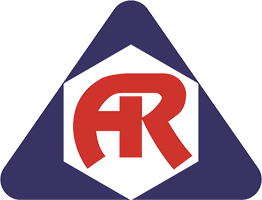In the field of precision machining, multi-axis linkage machining technology is playing an increasingly important role. Whether it is in the manufacture of molds with complex shapes or the machining of medical parts with extremely high precision requirements, multi-axis linkage machining, such as four-axis CNC machining and five-axis CNC machining, can achieve high-precision and complex surface machining that is difficult to achieve with traditional machining methods. However, to give full play to the advantages of multi-axis linkage machining and ensure machining accuracy, it is necessary to master a series of effective precision control methods.
Equipment accuracy assurance and optimization
- Machine tool precision calibration: High-precision machine tools are the basis of multi-axis linkage machining accuracy. In CNC machining, key indicators such as machine tool positioning accuracy, repeated positioning accuracy, and verticality and parallelism between axes have a great impact on machining accuracy. Regular comprehensive calibration of machine tools is an indispensable link. By using high-precision detection equipment such as laser interferometers and ballbars, the motion accuracy of each axis of the machine tool is measured, and the accuracy deviation caused by long-term use or mechanical wear is promptly discovered and corrected. For example, in a five-axis CNC machining center, if the rotation accuracy of the A-axis and C-axis deviates, it will directly lead to a decrease in the spatial angle accuracy of the machined parts. Calibration can ensure the accuracy of the movement of each axis, thereby ensuring the machining accuracy.
- Mechanical structure optimization: The mechanical structure stability of the machine tool is also crucial. The use of a high-rigidity bed and feed system can reduce vibration and deformation during the machining process. In precision machining, when the tool cuts parts at high speed, a large cutting force will be generated. If the mechanical structure of the machine tool is not rigid enough, it is easy to cause vibration, which in turn affects the machining accuracy. Some high-end machine tools use high-quality materials such as marble as the bed, which has good vibration absorption and thermal stability, and can effectively improve the machine tool's ability to maintain accuracy during multi-axis linkage machining.

Programming strategy and path optimization
- Accurate modeling and programming: Before multi-axis linkage machining, accurate three-dimensional modeling of the parts is required. Use advanced CAD/CAM software to convert the design drawings of the parts into accurate mathematical models. During the programming process, the tool and cutting parameters are reasonably selected according to the shape, size and machining requirements of the parts. For example, in the processing of medical parts, for implant parts with complex shapes, accurate modeling and programming can ensure that the tool path is accurate and avoid machining accuracy problems caused by programming errors.
- Tool path optimization: Reasonable tool path planning can significantly improve machining accuracy. In multi-axis linkage machining, it is necessary to avoid interference between the tool and the parts and fixtures, and minimize the idle stroke of the tool. The use of advanced tool path strategies such as contour machining and spiral machining can evenly distribute the cutting force, reduce the surface roughness of the parts, and improve the machining accuracy. Taking mold machining as an example, by optimizing the tool path, the machining marks on the mold surface can be made more uniform, the workload of the subsequent polishing process can be reduced, and the accuracy and quality of the mold can be improved.
Tool management and cutting parameter optimization
- Tool selection and wear monitoring: Choosing the right tool is the key to ensuring machining accuracy. In precision parts machining, different materials and processing processes need to match different types of tools. For example, for materials with higher hardness, the use of carbide coated tools can improve the wear resistance and cutting performance of the tool. At the same time, a tool wear monitoring system is established to grasp the wear of the tool in real time. When the tool is worn to a certain extent, replace the tool in time to avoid the decrease of machining accuracy caused by excessive tool wear.
- Cutting parameter optimization: Cutting parameters, such as cutting speed, feed rate and cutting depth, have a direct impact on machining accuracy. In multi-axis linkage machining, it is necessary to find the best combination of cutting parameters through experiments and simulation analysis according to the part material, tool material and machining requirements. For example, when machining aluminum alloy parts with four-axis CNC, appropriately increasing the cutting speed and reducing the feed rate can reduce the residual stress on the surface of the part and improve the machining accuracy.

Application of error compensation technology
In the process of multi-axis linkage machining, various errors, such as thermal error and geometric error, will inevitably occur. The use of error compensation technology can effectively improve the machining accuracy. By establishing an error model, the operating status of the machine tool is monitored in real time, and the generated errors are compensated in real time. For example, the temperature changes of various parts of the machine tool are monitored by a temperature sensor, and the axis displacement error caused by temperature changes is calculated according to the thermal error model, and the tool path is automatically adjusted through the CNC system to compensate for the error.
The precision control of multi-axis linkage machining in precision machining is a systematic project. It requires comprehensive consideration of multiple aspects such as equipment, programming, tools, and error compensation, and the adoption of effective control methods to achieve high-precision machining and meet the strict requirements of various industries for precision parts.







